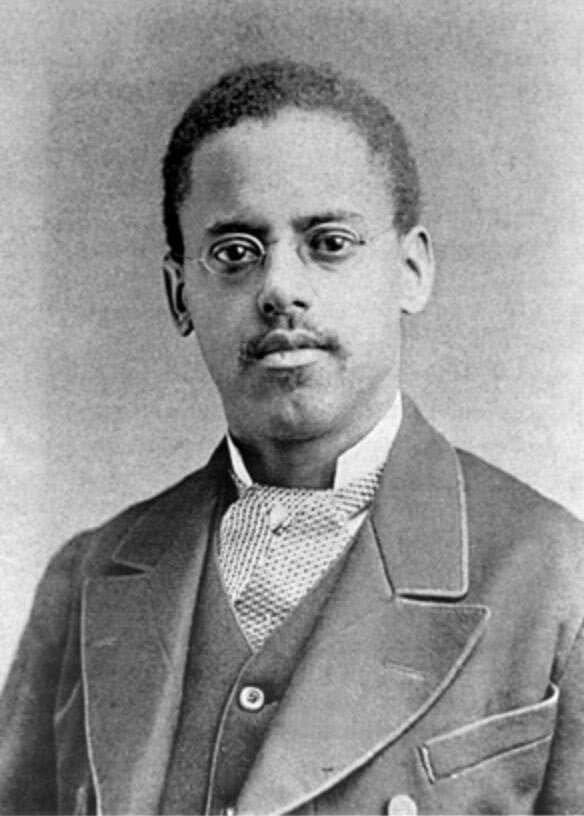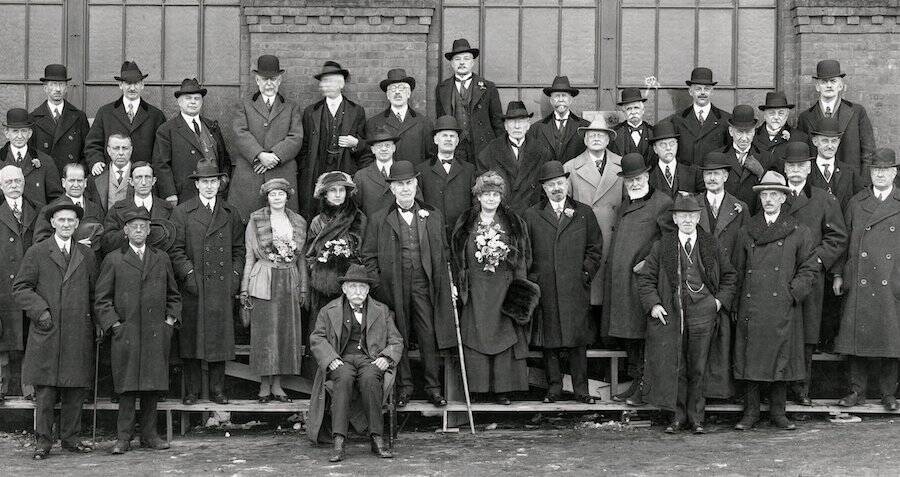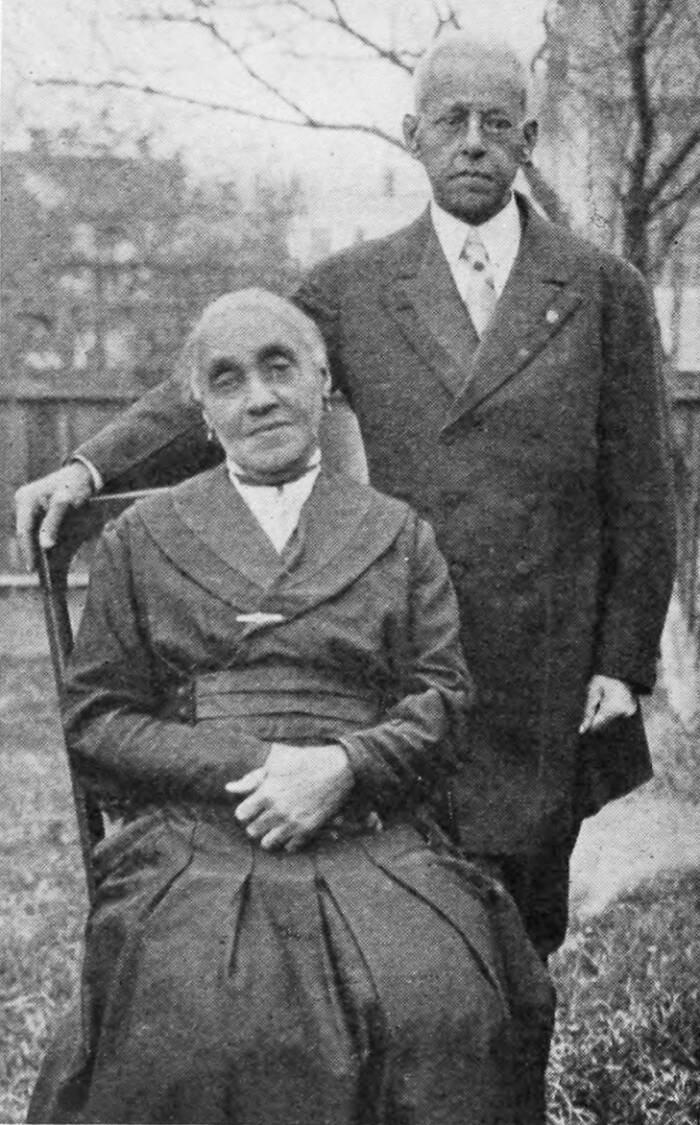He played a pivotal role in the invention of the modern lightbulb and telephone, and he was the only Black member of Thomas Edison's elite research team. But who was Lewis Latimer?

Wikimedia CommonsInventor Lewis Latimer played a major role in the history of electrical lighting.
Thomas Edison is often credited with inventing the lightbulb. But Lewis Latimer, a self-taught Black inventor, helped make it what it is today.
Born into a family of self-emancipated formerly enslaved people, Latimer taught himself mechanical drawing and quickly advanced in his field as an expert patent draftsman, playing a key role in the development of inventions like the telephone.
Not only did Latimer become the only Black man among Thomas Edison’s elite research team, but he was also a prominent inventor in his own right, designing an improved version of the lightbulb that brought down the cost of electric lights and made them more accessible for public use.
This is his inspirational story.
Lewis Latimer’s Early Years
In the early 1840s, George and Rebecca Latimer fled Virginia, where they had been enslaved. They eventually settled in Chelsea, Massachusetts and had four children. Their youngest, Lewis Howard Latimer, was born on September 4, 1848.
But the Latimers’ tragic past eventually caught up with them. Not long after they arrived in Massachusetts, George was recognized as a formerly enslaved person and was captured and jailed under fugitive slave laws.
Notable abolitionists Frederick Douglass and William Lloyd Garrison protested the arrest, but the case went to trial anyway. Although the judge tried to send George back to Virginia, a Black minister stepped in and paid $400 to secure George’s freedom.
Still, George had no official papers declaring him a free man. And when the Supreme Court ruled in the 1857 Dred Scott case that bondage crossed state lines, George went into hiding, leaving the family behind.
Lewis Latimer, still a young boy, spent his days reading, drawing, and working to help his mother. Then, the Civil War began. At the age of 16, Latimer joined the Navy by falsifying his age, according to a report by the Smithsonian’s Lemelson Center for the Study of Invention and Innovation.
After the war, Latimer found a job as an “office boy” at Crosby and Gould, a law firm in Boston that helped inventors secure patent rights.
And working there would change Latimer’s life.
An Expert Patent Draftsman Is Born
Lewis Latimer watched Crosby and Gould’s patent draftsmen at work and soon became impressed by the way they managed to draw detailed images to scale by hand. In an age long before white out, these mechanical drawings had to be precise and accurate or they wouldn’t hold up in a patent dispute.
Fascinated with the craft, Latimer began to teach himself mechanical drawing. He read books on the subject, carefully observed the other draftsmen, and practiced with compasses and rulers until he could create perfect ink drawings.
After a few months of practice, Latimer approached the firm to ask for a promotion. He showed off his mechanical drawing skills — and was hired as a draftsman. This promotion increased his salary from $3 per week to $20 per week.

National Museum of American HistoryA diagram drawn by Lewis Latimer demonstrates his skills as a draftsman.
In his new role, Latimer met many of the inventors who were changing the world. In the 1870s, for example, Latimer worked closely with Alexander Graham Bell, who hired Latimer to draw the patent blueprints for his latest invention: the telephone.
At the time, Bell was in a race to file his patent application before a rival. Thanks to Latimer’s skill and willingness to work long nights, Bell won the race, submitting his patent in 1876 just hours before the other inventor.
Without Latimer’s help, the name “Alexander Graham Bell” might not be known today.
From Mechanical Draftsman To Inventor
In the 1880s, Lewis Latimer began working for the U.S. Electric Lighting Company in Brooklyn. And it was in the area of electric lighting that Latimer had his greatest impact.
By drawing plans for lightbulbs and lamps, Latimer became intimately familiar with the way electric incandescent lighting worked. Eventually, he began to come up with some ideas of his own, and tried his hand at inventing.
At the time, Thomas Edison’s lightbulb, which contained a filament made from bamboo, lasted only a few days and had to be replaced frequently, Interesting Engineering reports. So Latimer decided to improve on Edison’s design. While experimenting with a new lightbulb filament, he wrapped a carbon filament in cardboard so it would burn longer — which also meant that it wouldn’t need to be replaced as frequently.
Latimer patented the invention, and his designs revolutionized incandescent lighting, helping to bring down the cost of lightbulbs and speed up the spread of electric lights across the country. Now, lightbulbs were more available to the public and for use in homes.

U.S. Patent OfficeLewis Latimer also patented a toilet system that could be used in railroad cars.
And Latimer’s inventions weren’t limited to lightbulbs. He also patented the first toilet for railroad cars and an early version of an air conditioning unit.
Lewis Latimer’s Work With Thomas Edison
In 1884, Lewis Latimer’s skills landed him a job working for Edison himself at the Electric Light Company in New York. There, Latimer applied his expertise in the field of patent writing to help Edison secure the rights to his inventions. He also managed the company library, researching data from around the world and translating it in French and German.
Soon, Latimer had taken on the role of patent investigator, and acted as an expert witness in court cases to protect Edison’s patent rights.

Latimer-Norman Family CollectionLewis Latimer was the only Black person in the Edison Pioneers, an elite group of researchers. Latimer stands second from the right in the very first row, in front of the risers.
In 1890, Latimer published a book, Incandescent Electric Lighting: A Practical Description of the Edison System. It quickly became the definitive work on incandescent lighting. According to Lemelson-MIT, Latimer also oversaw the installation of public electric lights in New York, London, Montreal, and Philadelphia.
The Final Years Of Lewis Latimer
Until he retired in 1922, Lewis Latimer continued to work at the intersection of inventing, patents, and drawing. In 1918, he became a charter member of the Edison Pioneers, a prestigious group of researchers. He was the only Black person in the elite group of 28.

Find A GraveLewis and Mary Latimer raised two daughters together.
When he wasn’t working, Latimer spent time with his family. Along with his wife, Mary Wilson, and two daughters, Latimer attended a Unitarian church.
A true renaissance man, Latimer painted, wrote plays and poems, and played the violin and flute. He also participated in a Civil War veterans group and taught mechanical drawing and English to recent immigrants. Just before his death in December 1928, Latimer’s daughters published a book of their father’s poems.
Lewis Latimer left his mark as an inventor and artist. Today, his legacy can be felt in the glow of street lamps, and in lit-up homes all around the world.
Lewis Latimer was only one of many Black inventors who changed America. Next, read about Garrett Morgan, inventor of the traffic light and gas mask, and then discover the fascinating stories of other Black inventors.





